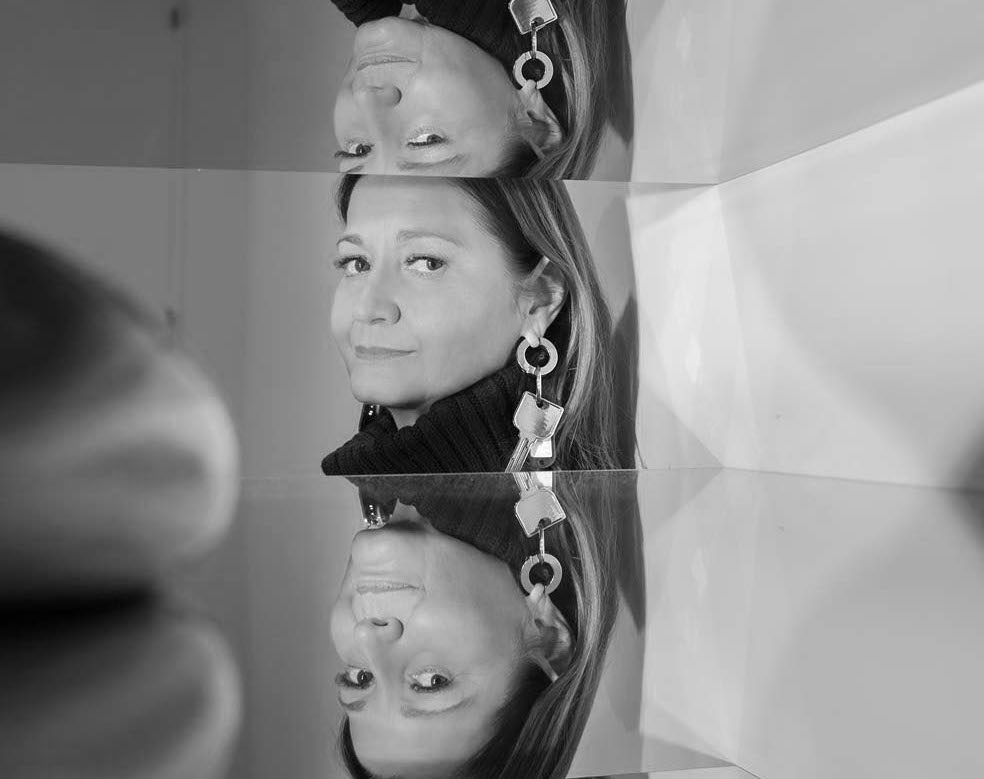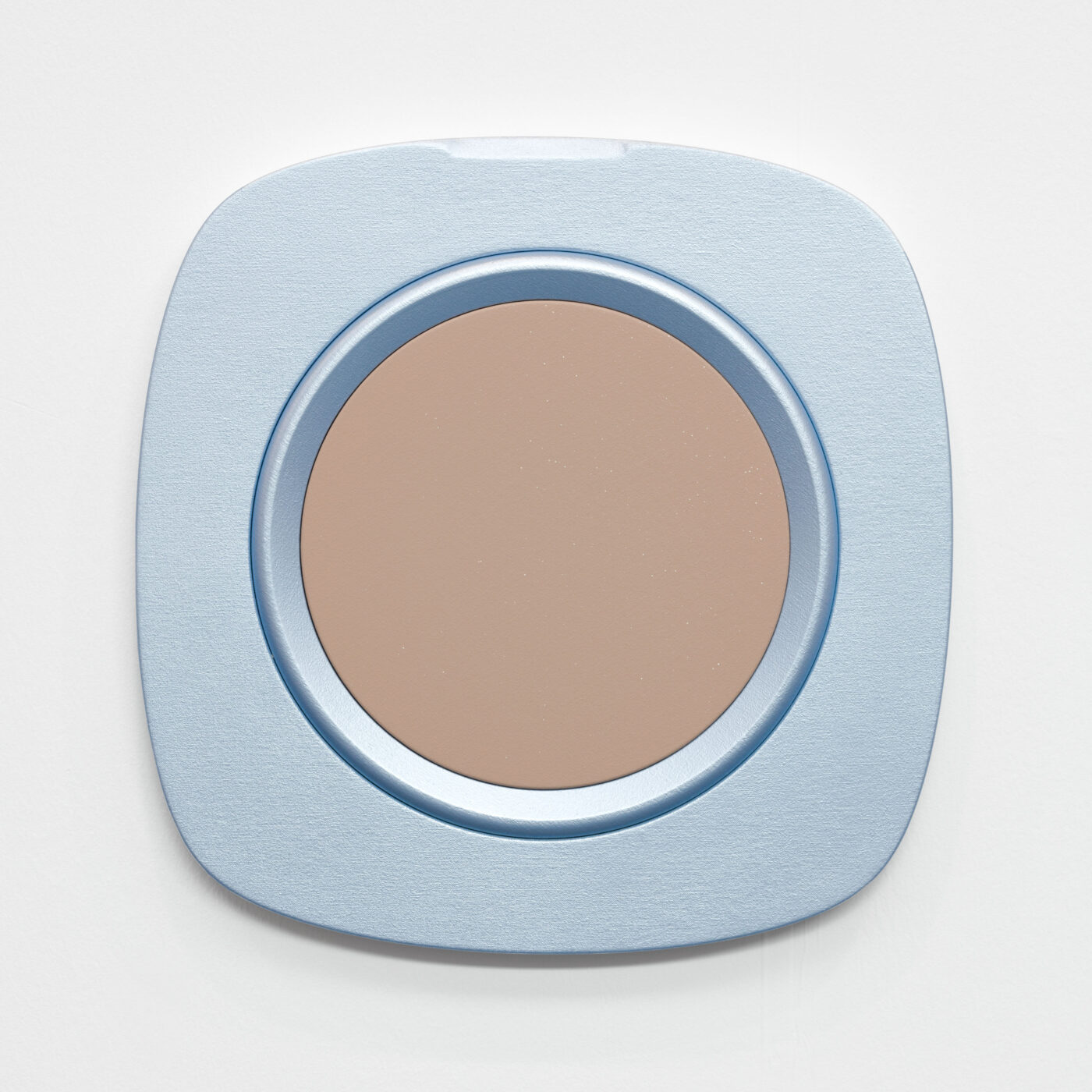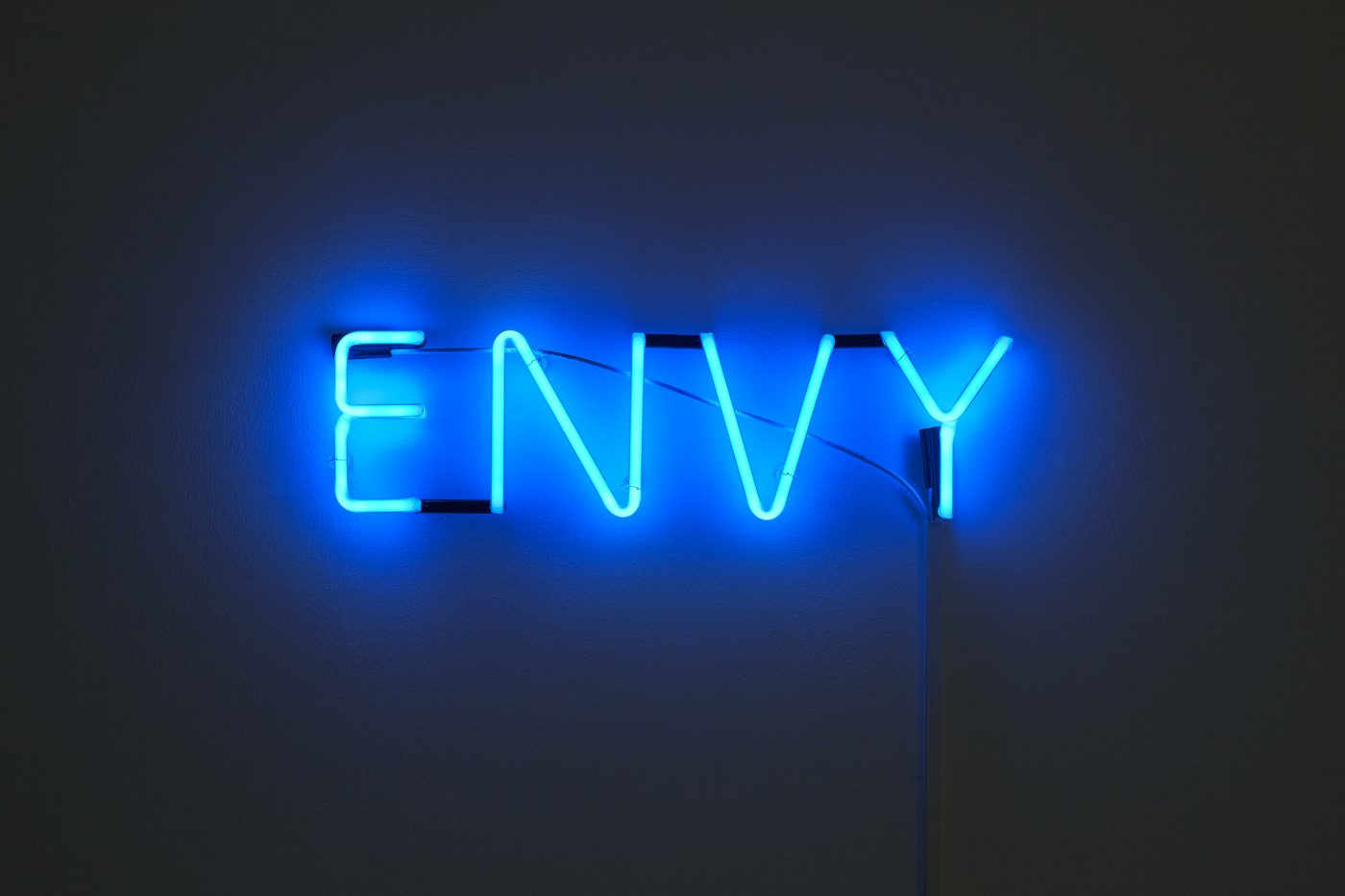Works
Exhibitions
Portrait

Sylvie Fleury is one of the most famous artists of our time. Her wit and her critical view of the consumer behaviour of our time have earned her worldwide recognition. Fleury is known for her productions of glamour, fashion and luxury goods. At first glance, her works seem like an affirmation of the consumer society and its standards, but on closer inspection one always encounters a subtle commentary on the beautiful appearance. The smooth surface aesthetics of her works prove to be fragile at second glance, questioning the value of consumer icons, be it the gilded shopping trolley or a marble sculpture of bulky winter boots.
Fleury’s oeuvre refers to the artistic aesthetics of Pop and Minimal Art, without exhausting itself in an “art about art. Probably no artist has ever united the idea of Marcel Duchamp’s Readymade with Warhol’s affirmation of the commodity world in such an unbiased way before. Her male artist colleagues disarm Fleury by playing with their art: Andy Warhol’s Brillo Boxes replace them with SlimFast packaging boxes, she uncovers striking similarities between Joseph Kosuth’s text art and advertising slogans, and with the unmistakable cuddly squares of artificial fur on stretcher frames, the “Cuddly Paintings”,
Biography
Lives and works in Geneva, Switzerland
Selected Solo Shows
Company Gallery, New York, USA
“S.F.”, Sprüth Magers, London, England
"Shoplifters from Venus", Kunstmuseum Winterthur, Winterthur, Switzerland
"Turn me on", Pinacoteca Angelli, Turin, Itlay
"Sylvie Fleury", Aranya Art Center, Beidaihe New Area, Hebei Province, China
"Performance Promise", Karma International, Zürich, Switzerland
“Shame”, Medi Chouakri, Berlin, Germany
"Chaussures italiennes", Instituto Svizzero, Rome, Italy
"JOY", Karma International, Zürich, Switzerland
"Hypnotic Poison", Galerie Thaddeus Ropac, London, UK
"Palettes of Shadows", Galerie Thaddaeus Ropac, Paris, France
"Eye Shadows", Salon 94, New York, USA
"Your Dress Is More Beautiful", Karma International, Zurich, Switzerland
"Sylvie Fleury", Mehdi Chouakri Gallery, Berlin, Germany
"C'est la vie !", Galerie van Gelder, Amsterdam, Netherlands
"Palais de L’Athénée (2015 Visual Art Price)", Geneva, Switzerland














